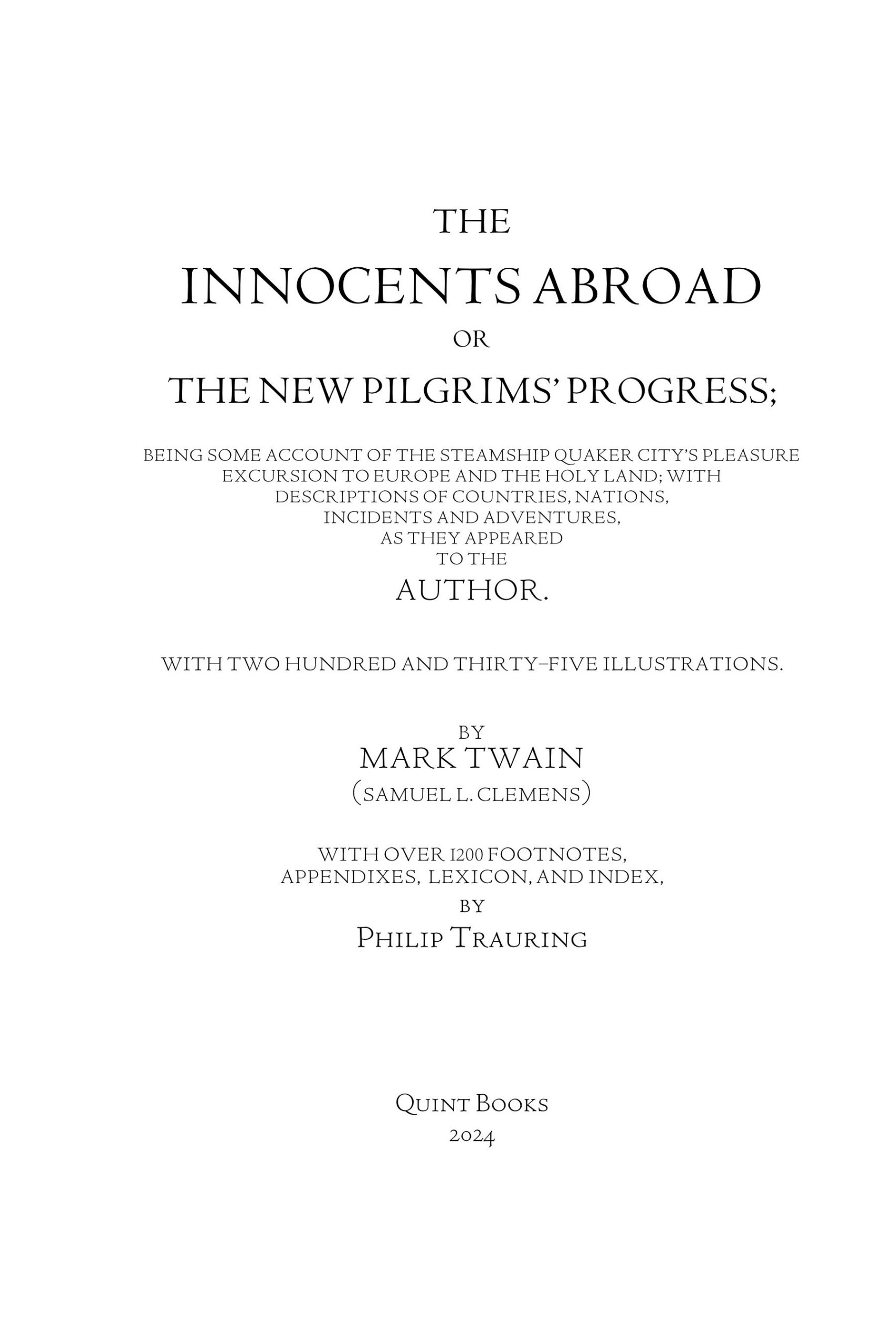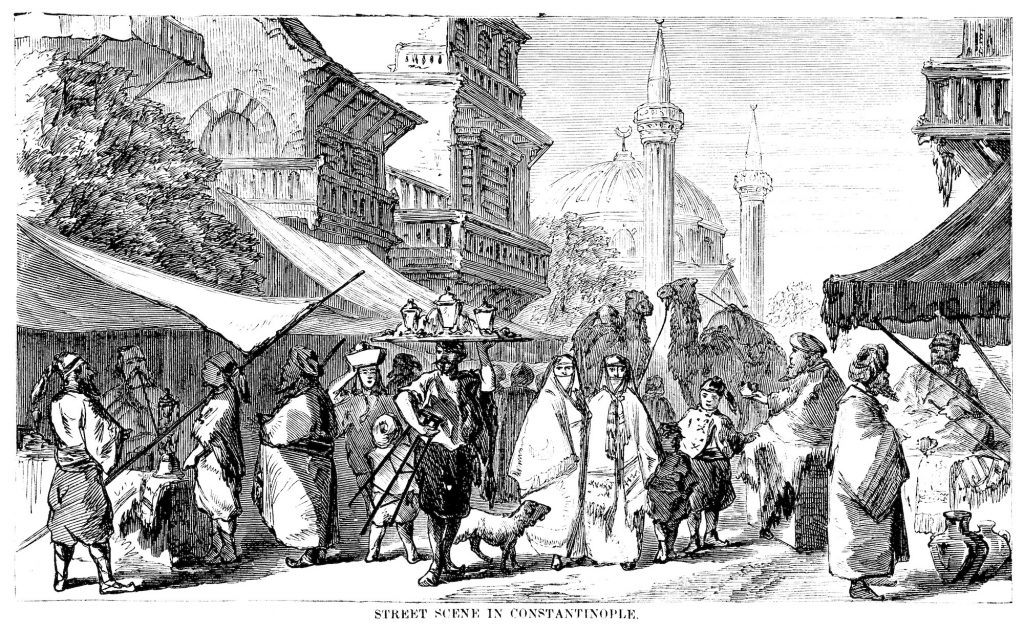Our edition of The Innocents Abroad is a very special edition, and we wanted to share some of what sets it apart from others. In our Introduction, we discussed things like the 1200 footnotes, hundreds of definitions, and 8 appendixes, but there is more that makes this edition special.
A lot of special attention went into crafting the book, and making it authentic to the 1869 edition, while also updating it for contemporary readers. Here are some details to look out for:
Title Page
The Title Page closely mirrors the original. Note that while the first edition title page mentions 234 illustration, we list 235 because of the second image of Napoleon III that was added to the first edition in a later printing (although they did not update the title page to reflect the new illustration).
The line about the book only being available via subscription was also removed, and instead the additions to the book are mentioned.


Illustrations
As mentioned above, there were 235 illustrations in the first edition of the book in 1869. All of them are reproduced in this edition. The illustrations are kept as close to their original locations in the text as possible.

Headers
Headers in most books today show the author name and the book title. Sometimes the chapter is shown. It is rare to have page headers change more often than from chapter to chapter. In the first edition, the page headers changed with the topic being discussed, and rarely showed up on more than one or two pages. At most it showed up on about 5 pages. This edition preserves the headers used in the first edition, and uses those headers as the basis for the Table of Contents. As the pages do not mirror the first edition exactly, the headers cannot exactly match their placement from the first edition, but they are very close. This is likely the first edition of the book since the first edition that preserves the original headers, as even later editions printed while Twain was alive discarded the headers.
Italics
Twain used italics for emphasis throughout the book. We preserve the italics.
Ligatures
The first edition used several ligatures in the book, including æ and œ. These have been preserved in this edition. Some examples include the words Piræus (the port of Athens), Cæsar, archæological, mediæval, Phœnicians, Cœli, and d’œvres.
Diacritics
The first edition had some diacritics (accent marks, usually above letters, used in many European languages other than English), and the later 1899 edition added some as well. Some examples include Asniéres, Borroméo, Père, and fête. In the first edition the phrase table d’hôte showed up in the table of contents with a diacritic (called a circumflex) above the o, but in the text it was missing. In the 1899 edition, the diacritic was added to the text. In another similar example, the phrase en règle shows up in the first edition without the diacritic, but does not receive one in the later edition. This has been left as it is in the book, even though it probably should have the diacritic.
In one example we removed a diacritic that was in the 1899 edition. In the first edition, Twain used the word canon and canyon to mean the same thing. This is because canyon, a new word in the English language at the time, came from the Spanish cañon. In the 1899 edition, they switched canon to cañon, but in this edition they are all spelled canyon for consistency and clarity (since Twain also used the word canyon in the book).
I hope this gives a good idea on how much attention to detail was put into this book to preserve the original experience of reading it, while also enhancing it with added information.
Leave a Reply